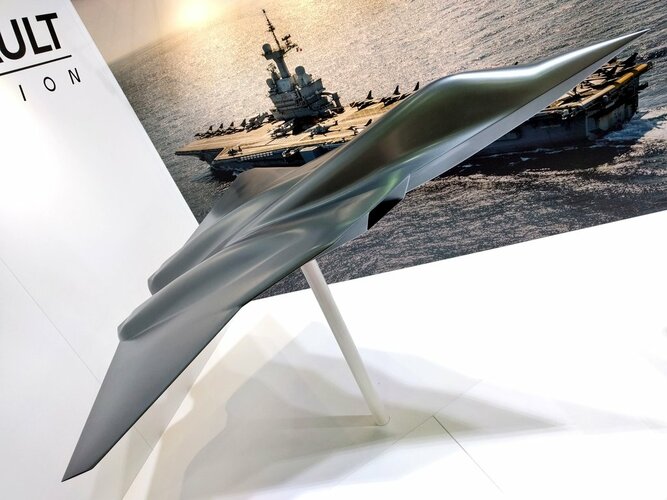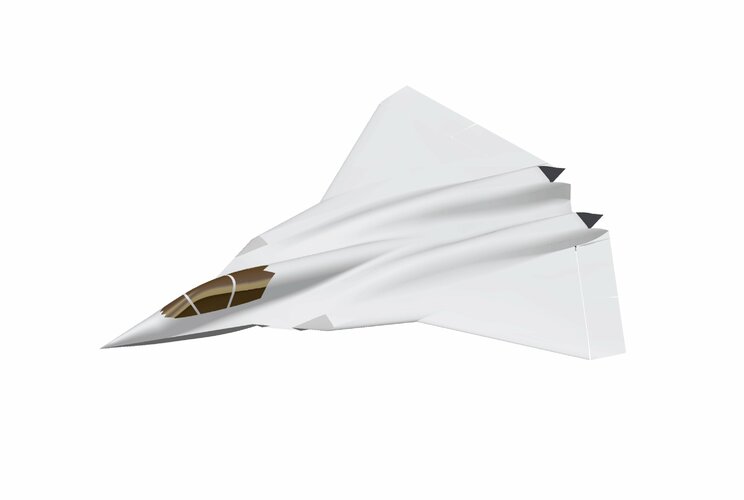(...)
Israel was reinstated as a partner in the development of the F-35 on 31 July 2006, after its participation was put on hold following the
Chinese arms deal crisis.
[4]
(...)
The first squadron of 20 F-35 jets from the first production series would only include a few Israeli-made systems. The United States, meanwhile, has agreed that if Israel buys more F-35 squadrons from later production series, the installation of more Israeli-made systems will be allowed. To sweeten the deal, Lockheed Martin said it would buy parts and systems for the F-35 from Israeli companies at a cost of $4 billion. The aircraft will be designated F-35I, as there will be unique Israeli features installed in them.
[15]
(...)
The finance minister said consideration also had to be given to Washington's opposition to the installation of Israeli systems and missiles on the plane. This would bar the plane from being outfitted with radar built by
Israel Aerospace Industries'
Elta division or missiles produced by
Rafael Advanced Defense Systems. Finance Ministry officials said the ban on installing Israeli systems on the aircraft would be a major blow to Israel's defense industry. In particular, the purchase of American missiles would hurt development of new Israeli missile systems. The ban also prevents countries that purchase the aircraft from buying such Israeli military systems. This contrasts with previous American fighters, on which Israeli components have been installed. The US has agreed to reciprocal purchases of equipment from Israel's defense industries totaling between $4 billion and $9 billion, which Steinitz acknowledged could remedy this situation.
[16]
Israel's three main areas of interest in customization are radar, electronic warfare and communications systems and independent maintenance capabilities.
[17]
Richard Genaille, deputy head of the Pentagon's
Defense Security Cooperation Agency, has said that installing different electronics on the F-35 would be very costly and "probably will not be in the best interest in the long run of" nations that make such changes.
[18]
Israel's guarantees of more than US$4B of aerospace work in exchange for their purchase of 20 F-35s valued at US$2.7B, without any other industrial investment in the program has caused aerospace analysts to question what benefits countries who have invested in the F-35 program will receive. Norway, Denmark and Italy have all expressed concerns that the industrial benefits from the program may be insufficient to justify participation.
[19]
(...)
While being interviewed by
Haaretz in May 2011, Ehud Shani said that "during the last visit by
Secretary of Defense Robert Gates to Israel a month ago, we were told that the delay may be shorter than they originally thought. In any case, I am not nervous about it. This [delay] may actually serve our interests. I favor an aircraft with as many Israeli-made systems as possible." He also said that "we will see how they try to meet our requests over this time. In the original timetable, it was argued that there was no time [to incorporate Israeli systems into the Israeli F-35s]. We will hear their conclusions and I expect a dialogue with the Americans over the new timetable and the changes."
(...)
According to a 7 July 2011
Aviation Week article, the United States has agreed to allow Israeli F-35s to be rewired so that Israeli electronic warfare systems can be installed on the aircraft. That would allow Israel to gradually add indigenous EW sensors and countermeasures on its fighters once it receives its first squadron. With that deal in hand, officials for both the IAF and Lockheed Martin expect the $2.7 billion contract for the procurement of 19 or 20 F-35As will be signed by early 2012.
[34]
"I believe that Israel could receive its first F-35s in late 2016," said Tom Burbage, Lockheed Martin's general manager of the F-35 program. A senior IAF official, who until then was concerned about delays in the program, said that the schedule agreed upon is "very satisfactory." Israel insisted that only its own EW systems would be suitable to meet the developing anti-aircraft threat in the region, such as the deployment of
SA-17 and
SA-22 air defense systems in Syria. But now, claimed the official, "the F-35s we will receive will be more than ready to meet those threats."
[34]
The IAF initially presented a long list of unique and costly requirements for the JSF, but it has accepted that its first F-35s will be almost identical to those of the
U.S. Air Force, with only Israeli command, control, computers, communications and intelligence systems installed in them. The plans to add Israeli EW systems, air-to-air and air-to-ground munitions as well as an external fuel tank, were approved in principle but will be deferred in order to protect the budgetary framework and delivery schedule.
[34]
(...)
A senior Israeli air force official stated, "the aircraft will be designated F-35I, as there will be unique Israeli features installed in them." The United States initially refused to allow the integration of Israel's own electronic warfare systems into the aircraft's built-in electronic suite. However, Israel planned the introduction of a plug-and-play feature added to the main computer to allow for the use of Israeli electronics in an add-on fashion, and to fit its own external jamming pod.
[62] The IAF dispatched two officers to the US where they discussed issues involving the integration of Israeli technology into the fighter with Pentagon and Lockheed Martin officials.
[35] In July 2011, it was reported that the U.S. had agreed to allow Israel to install its own electronic warfare systems and missiles in its F-35s in the future.
[63] In 2012 Lockheed was awarded a contract to make changes to the first Israeli F-35s to allow the installation of Israeli electronic warfare equipment produced by
Elbit Systems.
[64][65] This equipment will use "specific apertures ... in the lower fuselage and leading edge".
[66] Israel also plans to install its own indigenously-produced guided bombs and air-to-air missiles in the F-35's internal weapon bays.
[62] Benni Cohen compared the Israel Aerospace Industries
Command and control system to an
iPhone App that would run on top of the central avionics.
[67]
Israel Aerospace Industries will manufacture the outer wings of Israel's F-35s.
[65] IAI may also play a role in the development of a proposed two-seat F-35. An IAI executive stated, "There is a known demand for two seats not only from Israel but from other air forces. Advanced aircraft are usually two seats rather than single seats."
[68] The Israeli F-35s helmet-mounted displays will also be manufactured in Israel.
[69] This is part of the
Offset agreement provided to Israel, in spite of the purchase being entirely funded by American aid.
[70]

therestlesstechnophile.com














